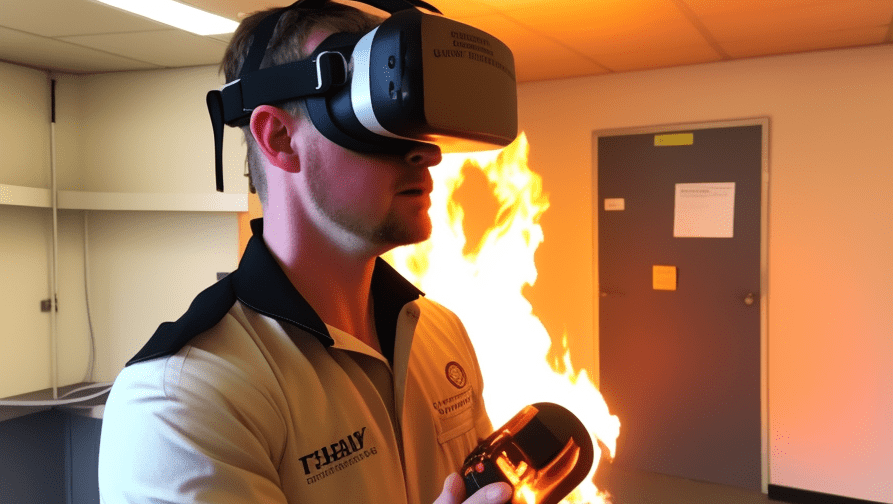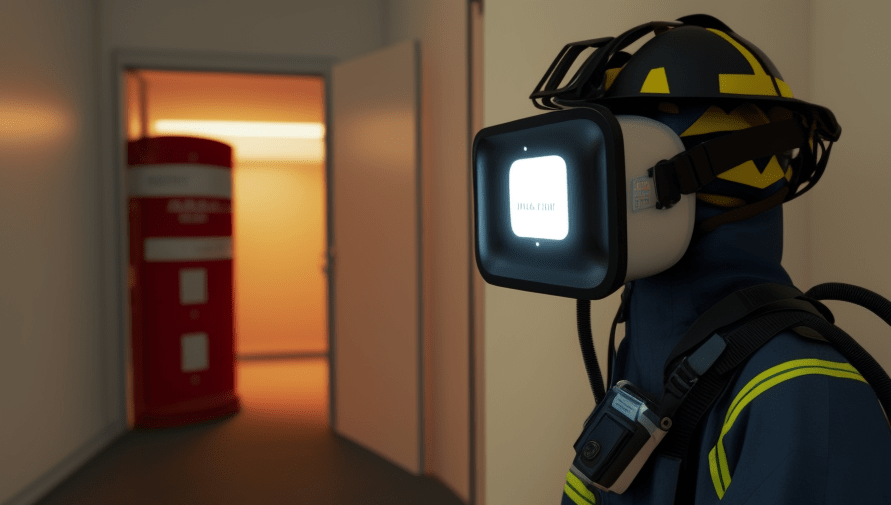Data from the Ministry of Home Affairs from 2017 show that there are less than 3,000 fire stations in India, compared to the needed 8,559, and that roughly 6,00,000 fewer people work in fire departments nationwide.
Also, 2.6% of the leading causes of mortality in 2019, according to the ADSI data, were due to accidental fire. Certainly, the archaic administration and training of fire safety requires a new strategy to reduce the frightening numbers and equip personnel for such unforeseen events.
VR at its best shouldn't replace real life, just modify it, giving us access to so much just out of reach physically, economically. If you can dream it, VR can make it.

How might virtual reality revolutionise fire safety training?
Wherever, at any time, a fire can start. It may occur at work or at home. It’s crucial to develop the knowledge of what to do and what not to do in these circumstances.
Organisations that provide fire department services have been training their employees on fire safety for decades utilising conventional methods and tools like structural burn buildings for walkthroughs and flame generators.
But, even a small mistake can be catastrophic for both professionals and trainees while performing live-fire training exercises.
On the other hand, building a training facility and maintaining it can be expensive, whether it’s for in-house employee training or professional firefighter training facilities.
Virtual Reality has the potential to dramatically transform fire training in this area. Here are the key three justifications:
Cost-effective
Using VR, it is possible to imitate the surroundings of the real world and generate a variety of firefighting scenarios. In this manner, employees, professionals, and trainees can all learn how to respond in various scenarios.
Because of this, building a new infrastructure exclusively for training will be much less expensive. With VR, all you need is a few headsets—PC or standalone, depending on the simulation type—and an existing lecture hall or classroom where you can put up the headsets and ask participants to try it out.
One of VR’s main benefits is that it makes distant cooperation possible. Workers in the present pandemic situation don’t need to physically travel to the affected area; they can learn from the comfort of their home.
Eco-friendly
Training facilities have historically used theatrical smoke machines with artificial fire and live-fire training to instruct experts and novices so that users can experience realistic heat conditions. Unfortunately, no research evaluating the effects of various fuels have been conducted In contrast to the current training approaches, virtual reality is a more environmentally friendly option. It is an act of pride to adopt eco-friendly solutions that can benefit the environment and users, especially in light of the fact that many nations are engaging in global dialogue about climate change.
Immersive Education.
VR offers immersive learning, where students learn by doing, in contrast to traditional learning tools like movies, SOPs printed on paper, and photos.
The learning is much more advantageous because the user is totally engaged in the virtual environment and isn’t diverted by the sounds of the outer world.
A learner engages in active learning when they are witnessing a phenomenon or a simulation, according to American educator Edgar Dale.
Contextual learning is made possible by VR, allowing users to interpret their own virtual encounters. It enables students to recall material for an extended period of time and carry out practical tasks more precisely and securely.
Experiential learning in VR also inspires students and boosts their self-esteem.
With VR, you're not interpreting the medium: you're in it; which means that the medium is disappearing, that your consciousness becomes the medium.

How are Simulanis utilising VR for training in fire safety?
Virtual Fire Safety VR consists of both hardware and software. For a multi-sensory experience, it includes a VR headset, a real fire extinguisher, and a fire heater in the hardware.
It has 4 different kinds of immersive module material in the software, which are as follows:
Fire Introductory
Understand the basics of fire, potential causes, and how to avoid it.
Fire Classification
Find out about the various types, classes, and symbols of fire.
Fire Extinguisher Types
Learn how to utilise various fire extinguishers, such as foam, CO2, water, and dry powder, as well as when to use each extinguisher in different firefighting scenarios.
Fire extinguisher techniques
Through our immersive and interactive module, students can gain practical experience by simulating a real-life fire situation and learn how to use an extinguisher by pulling the safety pin, aiming the nozzle at the base of the fire, slowly pressing the level to release the material, and sweeping it on the fire to put it out.

Conclusion
Overall, the use of VR technology in fire safety and training has enormous potential to improve the safety and effectiveness of first responders. As the technology continues to evolve and become more widely available, we can expect to see even more innovative uses of VR in the field of fire safety in the coming years.


